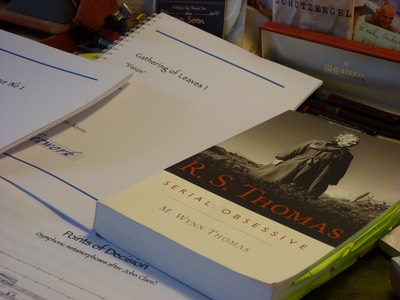It is obvious that composers use notes, or sounds, to create their music, but I have come to question whether those notes are sufficient in themselves to make ‘music’. This poses the question, I suppose, of what music actually consists of, but I believe there is an accepted meaning to this to which concert goers will readily adhere. Whether or not one believes that it should be emotionally engaging, or merely abstract in nature in the manner of much contemporary music, it is generally regarded as concert music. It is that concert music which some contemporary composers are currently writing which concerns me here, and whether or not it is narrative in nature, or abstract I have wondered if composers are bothered about the way they use their material. One assumes that a composer uses sounds for his composition, and that these sounds are called notes, but, what is it that he does with them. Does he, indeed, need to do anything with them? Are notes enough, for him (or her) to fabricate the art work.
This depends upon many factors, of course, and although we have a plurality of styles and genres in ‘music’ the works that have emerged over the last decade or so have tended towards two possible types, within the broader church of music, and not sound. These two types perhaps exhibit either representational or abstract stylistic traits. They tend to have something extra musical to say beyond the notes, or they do not. This is a fascinating area for comparison, although it may seem at first that such types of composition would be incompatible with each other. On a generic macro scale, of course, they are not, because the artistic ethics of the respective arts (representational v abstract) are mutually incompatible, but within each style one can consider the compositional processes with which composers’ engage, and perhaps see similarities in them.
Consider, for example, whether one can accept that notes (sounds) have intrinsically sufficient character in themselves to be used in a composition, without any, or much, additional manipulation from the composer. This is, of course, the view, in essence, of many following on from Webern in the modernist aesthetic, although, apart from the ‘greats’ who have trodden that path, many lesser figures have failed to produce works of quality and character that have lasted the effects of time and criticism. And for those composers who have forged a different path in the last two decades or so, along a more purely ‘music’ route, which in many ways seems to be a traditional one although this label, I think, is debatable these days, then the same criticism can be applied to the art works produced, because even when a composer explicitly wants an expressive, and dare I say emotional, aspect to their music, representational or not, then the same question raises its head – are notes enough, to carry the communication process to the listener.
This, I suppose, is the crux of the matter. What, and how, do we communicate our ideas to listeners of music, and whether or not we want to incorporate extra musical meaning into the art work, how do we make the notes (sounds) do that. (The whole question of ‘meaning’ is yet another area of fruitful enquiry). My thesis, I suppose, is that notes are not enough in themselves to create musical communication, and that composers must give them some sort of ‘character’, which can be perceived by their listeners, and this depends upon using the notes creatively along with other parameters of music – rhythm, harmony, texture, etc.. – in order to create that total experience which we intuitively call musical. The communication between creator and appreciator can then occur. My reason for penning such thoughts is that I feel that ‘technique’ in composition is somewhat anathema, these days, in composition teaching, and, in keeping with everything else, seems to be desired in such haste that the results, for me, are ineffectual. There is no quick fix for hard earned technique, other than lengthy and detailed study of the sort of pieces that the aspiring mind finds a kinship with, along with a healthy dose of objective, humble, criticism.
What is it that results, if we create without that solid technique and informed critical faculty, that comes from engaging with a corpus of works from other composers from the recent or the distant past. Yes, I still believe that the ol’ fogies wearing wigs can still teach us something, if we want to learn from them, and know what it is that we need to learn, so that we do not have to only study the works of contemporaries to pursue our path to greater facility. That they created their music with an eye to clear communication with others, is obvious, and, with their attempts to create something perhaps even spiritually higher than their own lives, they taught us to shoot for the stars. If we do not try this path, which one do we find ourselves upon? Without having our eye on the stars and our feet in solid learning and technique, then we risk indulging in note spinning for its own sake, for the individual’s sake, not anyone else’s. We then take our eye off the perception process that our listeners need to participate in, in order to understand our music and what it might be saying, with, and beyond the notes. We must not be content with our little personal poems of reflection, reminiscence, or therapy, because they are just that, personal diaristic moments, of the sort that many would-be poets have written, but, rather, we must strive for the artistic universality of the greats, and that can only come from greater understanding of their talent, and their technique. Words are not enough in themselves to convey meaning beyond the simplistic, and neither are notes enough to carry the perception of rich musical meaning.

